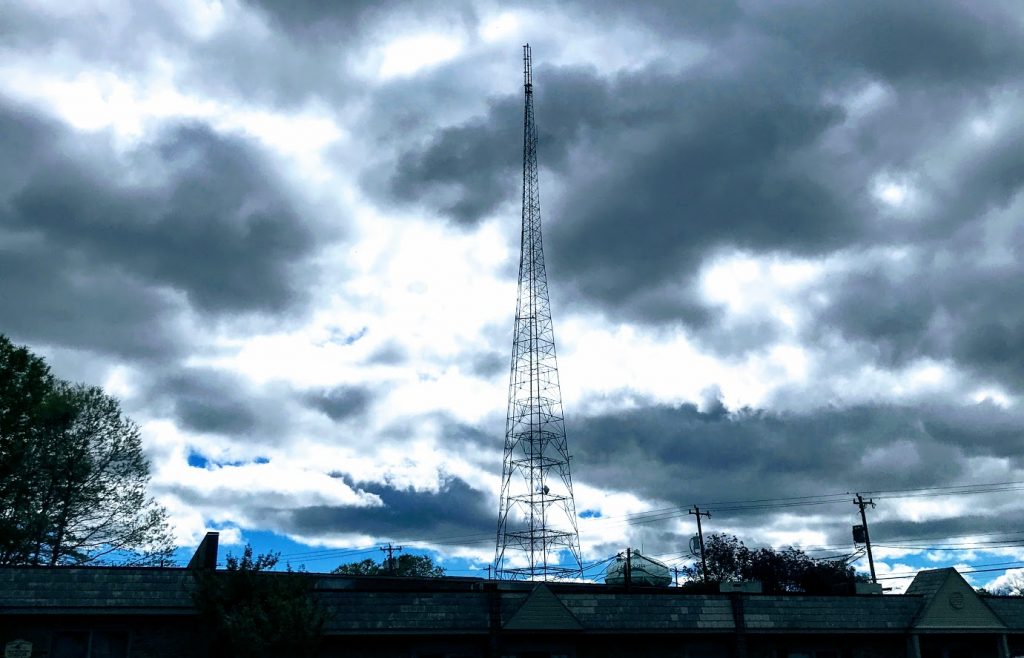 Radio Waves: Stories Making Waves in the World of Radio
Radio Waves: Stories Making Waves in the World of Radio
Because I keep my ear to the waves, as well as receive many tips from others who do the same, I find myself privy to radio-related stories that might interest SWLing Post readers. To that end: Welcome to the SWLing Post’s Radio Waves, a collection of links to interesting stories making waves in the world of radio. Enjoy!
Many thanks to SWLing Post contributors Jack Kratoville, Dave Zantow, and Dennis Dura for the following tips:
Live From Everywhere? The American Radio DJ In An On-Demand World (1A)
iHeartMedia owns and operates 858 broadcast radio stations, serving more than 150 markets throughout the U.S. The company reaches over a quarter billion monthly listeners ?in America.
In January, news hit that iHeartMedia was reassessing its ability to adapt to the modern music industry. The company said that it plans to make “significant investments … in technology and artificial intelligence.”
However, its on-air DJs were caught off guard when they found out that the company’s restructuring plan didn’t include them.
Streaming platforms has ushered in the digital age of music where each person make their own playlists. What does that mean for the future of the on-air DJ in the United States?
Click here to listen to the audio.
A comprehensive lab comparison between multiple software defined radios (RTL-SDR.com)
Librespace, who are the people behind the open hardware/source SatNOGS satellite ground station project have recently released a comprehensive paper (pdf) that compares multiple software defined radios available on the market in a realistic laboratory based signal environment. The testing was performed by Alexandru Csete (@csete) who is the programmer behind GQRX and Gpredict and Sheila Christiansen (@astro_sheila) who is a Space Systems Engineer at Alexandru’s company AC Satcom. Their goal was to evaluate multiple SDRs for use in SatNOGS ground stations and other satellite receiving applications.
The SDRs tested include the RTL-SDR Blog V3, Airspy Mini, SDRplay RSPduo, LimeSDR Mini, BladeRF 2.0 Micro, Ettus USRP B210 and the PlutoSDR. In their tests they measure the noise figure, dynamic range, RX/TX spectral purity, TX power output and transmitter modulation error ratio of each SDR in various satellite bands from VHF to C-band.
The paper is an excellent read, however the results are summarized below. In terms of noise figure, the SDRplay RSPduo with it’s built in LNA performed the best, with all other SDRs apart from the LimeSDR being similar. The LimeSDR had the worst noise figure by a large margin.[…]
Radios that Never Were (N9EWO)
Dave Zantow (N9EWO) shares a new page on his website devoted to receivers and amateur transceivers that never quite made it to the marketplace. […]
Shortwave: A Modern Internet Radio Player for Linux (It’s Floss)
Brief: Shortwave is a modern looking open source Internet Radio player for Linux desktop. We take a quick look at it after its recent stable release.
Shortwave is an interesting open-source radio player that offers a good-looking user interface along with a great experience listening to the Internet stations. It utilizes a community-powered database for the Internet stations it lists.
Shortwave is actually a successor of the popular radio app for Linux, Gradio. Its developer Felix joined GNOME and discontinued Gradio to create Shortwave from scratch in Rust programming language. If you were using Gradio as your preferred Internet radio station player, you can import the library as well.
Recently, Shortwave released its first stable version and seems to push new updates after that as well.[…]
Do you enjoy the SWLing Post?
Please consider supporting us via Patreon or our Coffee Fund!
Your support makes articles like this one possible. Thank you!


“Radios that Never Were”: you can add several receivers for Digital Radio Mondiale to the list
some of these receivers are shown there (about launch of DRM at IFA Berlin 2006):
https://www.dw.com/de/nachlese-ifa-2006-drm-radios-in-serie/a-2173300
I tested some and they showed less than perfect performance for daily DRM listening on shortwave.
> “… several …”
By one count I’ve seen (a couple of years out of date), it’s something like 55 announced – and about 13 ever released. Mentally adding in what’s been announced over the last couple of years the numbers may have changed, but I don’t think the ratio / % will be much different.
As for the virus affecting disc jockeys, well the Polish and country music show that I listened to every Saturday on WBCB, 1490AM, from the Philadelphia area cancelled those shows and have gone automated broadcasting for the weekends. This is to prevent the viral contagion in the studio. No more weekend DJ’s playing music and taking call-in requests.
I think the world will change as a result of social distancing. The Internet will be preeminent teacher/educator and the number of bricks and mortar institutions will be vacant. Distance learning (or as we called it “correspondence schools” in the old days) will become more popular, at least in the short term. This is the “correction” for our former daily lives.
That Sangean MP-40 radio did appear in the UK as a Roberts branded radio, but I was quite disappointed with it. It was buggy, didn’t work with SD cards properly, the record feature was buggy, and the menu system felt quite awkward. It looked very nice but wasn’t up to scratch unfortunately.
Looking at it again, I wonder if the Roberts version was slightly different, that or the DRM functionality was turned off in software.